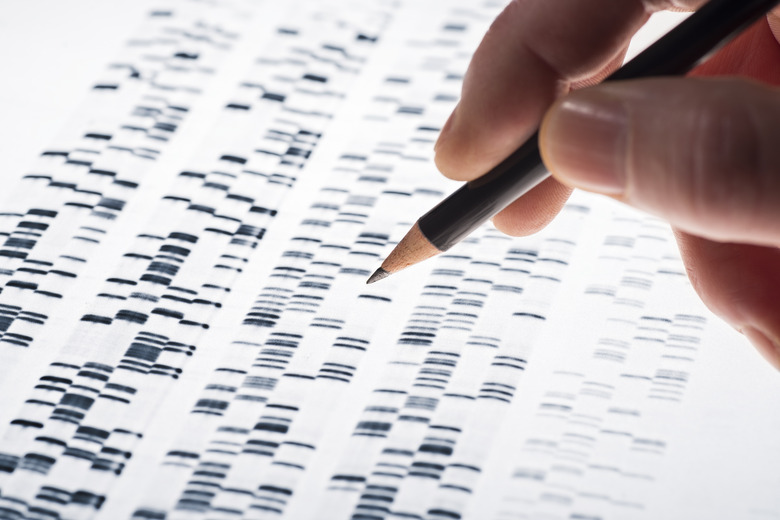How To Translate MRNA To TRNA
To translate messenger RNA, or mRNA, use an amino acid table to help you figure out the codon sequence in transfer DNA known as tRNA. Genes in DNA are like coded recipes for proteins. Cells transcribe these coded recipes onto an messenger mRNA transcript and export it out of the nucleus into the cytoplasm of the cell. Structures called ribosomes make proteins that help with the transfer RNAs, or tRNAs. This process is called translation. In biology a or genetics course, some classes may want you to take an mRNA sequence and figure out what sequence of tRNAs, and hence amino acids, it codes for.
Step 1
Find the first place in the mRNA sequence where the start codon, defined as a sequence of three nucleotide genetic code, begins. The start codon is AUG or AUG, which codes for the amino acid methionine. So all proteins start with the amino acid methionine, known as the N-formylmethionine in bacteria.
Step 2
Translate each letter of the mRNA codon into an amino acid using an amino acid table, found online or in coursework books. Remember that a tRNA essentially acts as an adapter in translation. A tRNA is an RNA molecule with a three-base anticodon which is complementary to a given mRNA unit of genetic code. Letters A are always complementary to Us, and Cs are complementary to Gs. Each tRNA is attached to an amino acid, so the ribosome moves down the mRNA transcript, positioning a matching tRNA codon next to each mRNA codon and linking the amino acids before ejecting the tRNA. Since each codon has three bases, you'll move down the mRNA transcript three bases at a time. Write down the name of each amino acid relative to the three-letter sequence.
Step 3
Notice more than one mRNA codon can code for the same amino acid. That's because the third base of the tRNA doesn't have to bond as tightly to its opposite number in the mRNA transcript as do the first two bases. The third codon position is called the wobble base-pair.
Step 4
Stop translating once you reach a stop codon in the mRNA. Three letters represent the stop codons: UAA, UAG and UGA; they signal the end of the polypeptide chain.
Warning
The genetic code is universal – with a few slight variations – in all known organisms, another piece of scientific evidence that points to descent from a common ancestor. While translating an mRNA sequence may be easy enough today, it took scientists almost 10 years after the discovery of the structure of DNA to crack the genetic code.
Cite This Article
MLA
Brennan, John. "How To Translate MRNA To TRNA" sciencing.com, https://www.sciencing.com/translate-mrna-trna-7163970/. 13 March 2018.
APA
Brennan, John. (2018, March 13). How To Translate MRNA To TRNA. sciencing.com. Retrieved from https://www.sciencing.com/translate-mrna-trna-7163970/
Chicago
Brennan, John. How To Translate MRNA To TRNA last modified March 24, 2022. https://www.sciencing.com/translate-mrna-trna-7163970/
